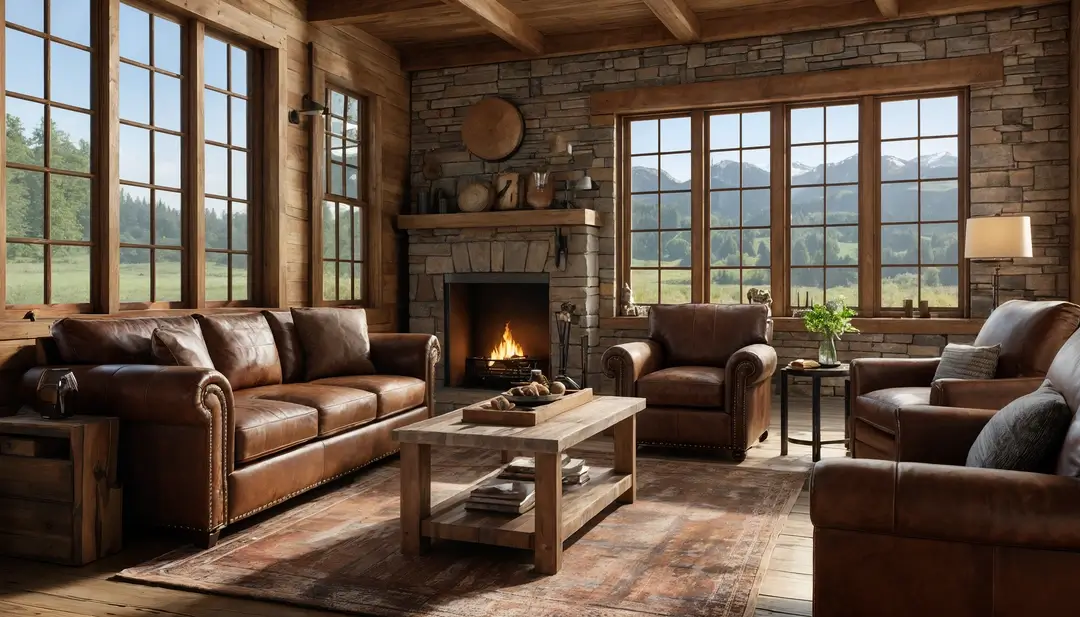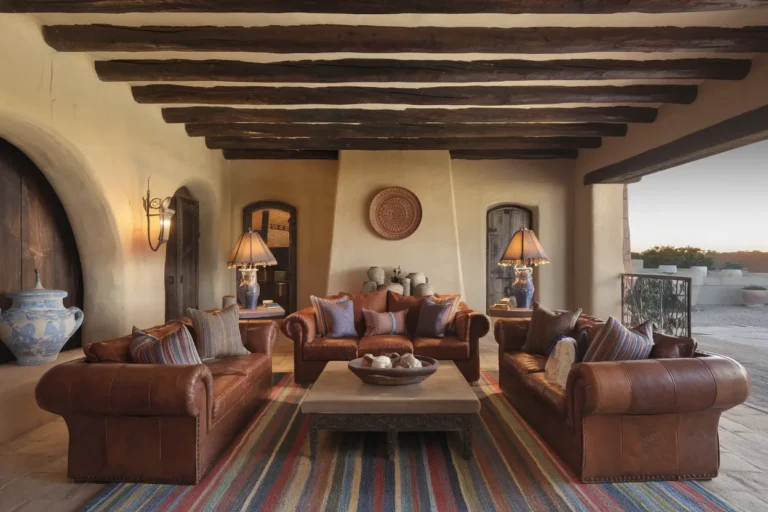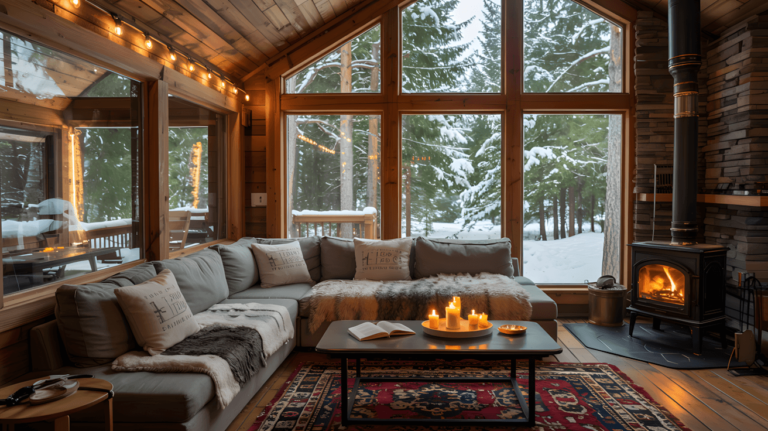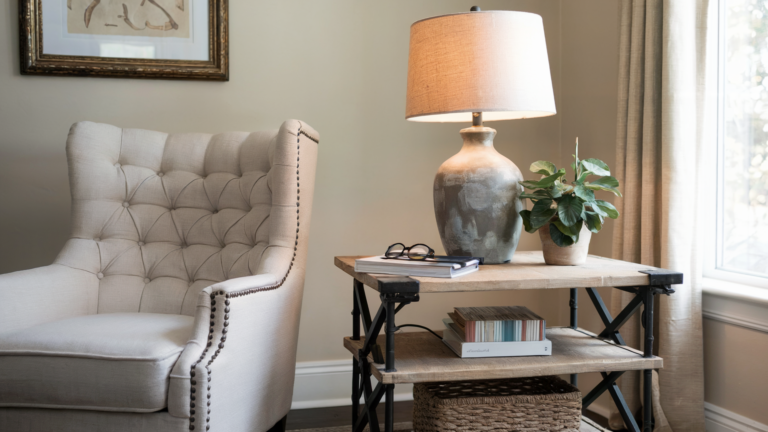In my experience working with homeowners on living room designs, I’ve observed that brown leather couches often serve as versatile centerpieces that work across various decorating styles. Through different projects, I’ve learned that this furniture choice typically provides both durability and sophistication while offering styling flexibility that many homeowners find valuable.
Note: For any structural modifications, electrical work, or installations mentioned in this article, always consult with licensed professionals to ensure safety and code compliance.
What makes brown leather couches particularly appealing is their ability to age gracefully while maintaining elegance. I’ve found that homeowners often choose leather because it develops attractive patina over time while remaining practical for daily use. The rich brown tone typically works well as both a neutral foundation and a statement piece, depending on surrounding elements.
Here are 25 approaches for styling brown leather couches that often work well in different home settings, based on observations from various design projects.
1. Soft Textile Contrast Strategy
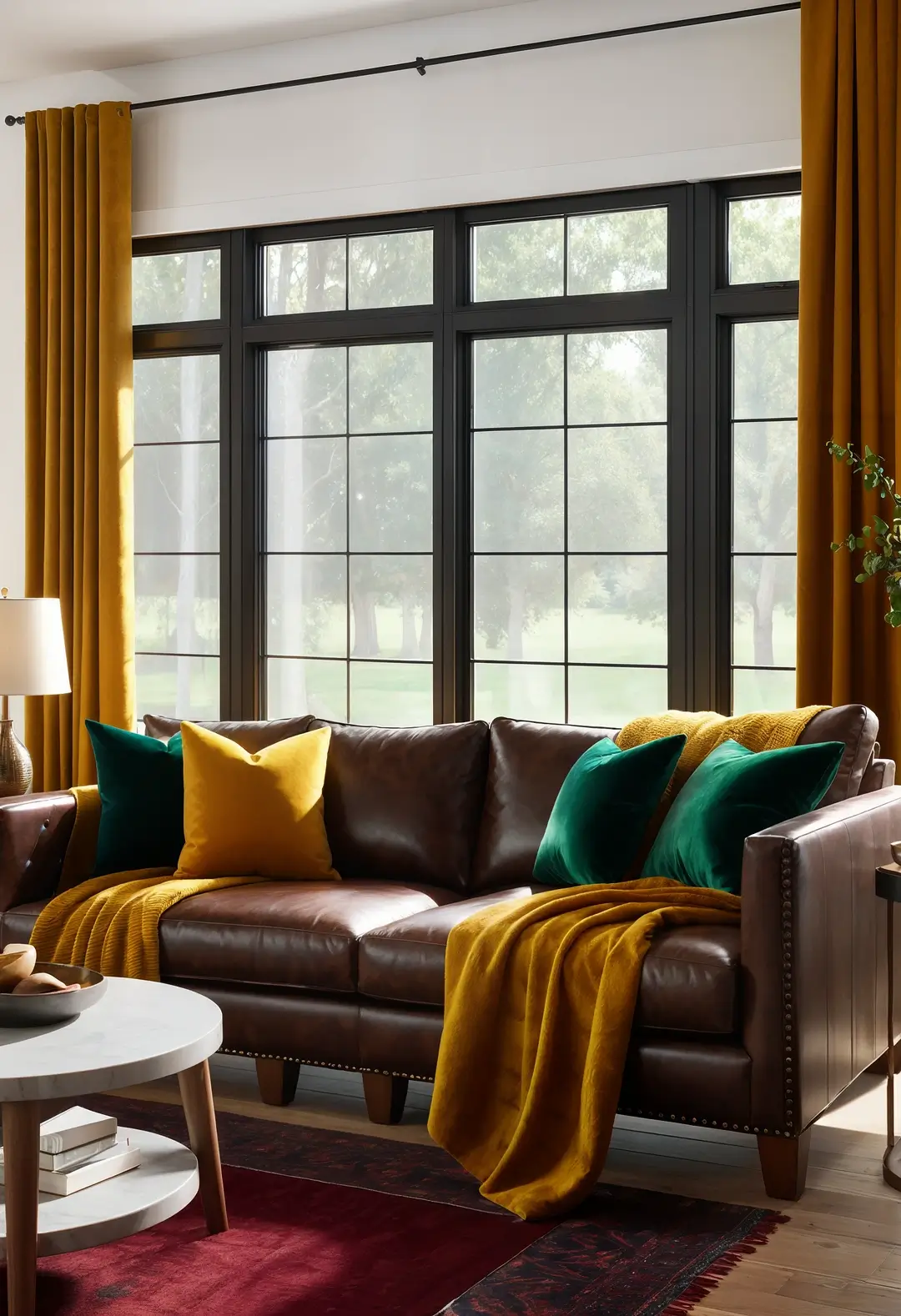
This approach often appeals to homeowners seeking to balance leather’s sleek surface with cozy textures. Adding plush throw pillows and soft blankets typically creates inviting contrast while maintaining sophistication.
Design consideration: Velvet or faux fur textures often provide effective contrast against smooth leather surfaces.
Color approach: Jewel tones like emerald or burgundy often create striking visual interest against brown leather foundations.
2. Natural Wood Element Integration
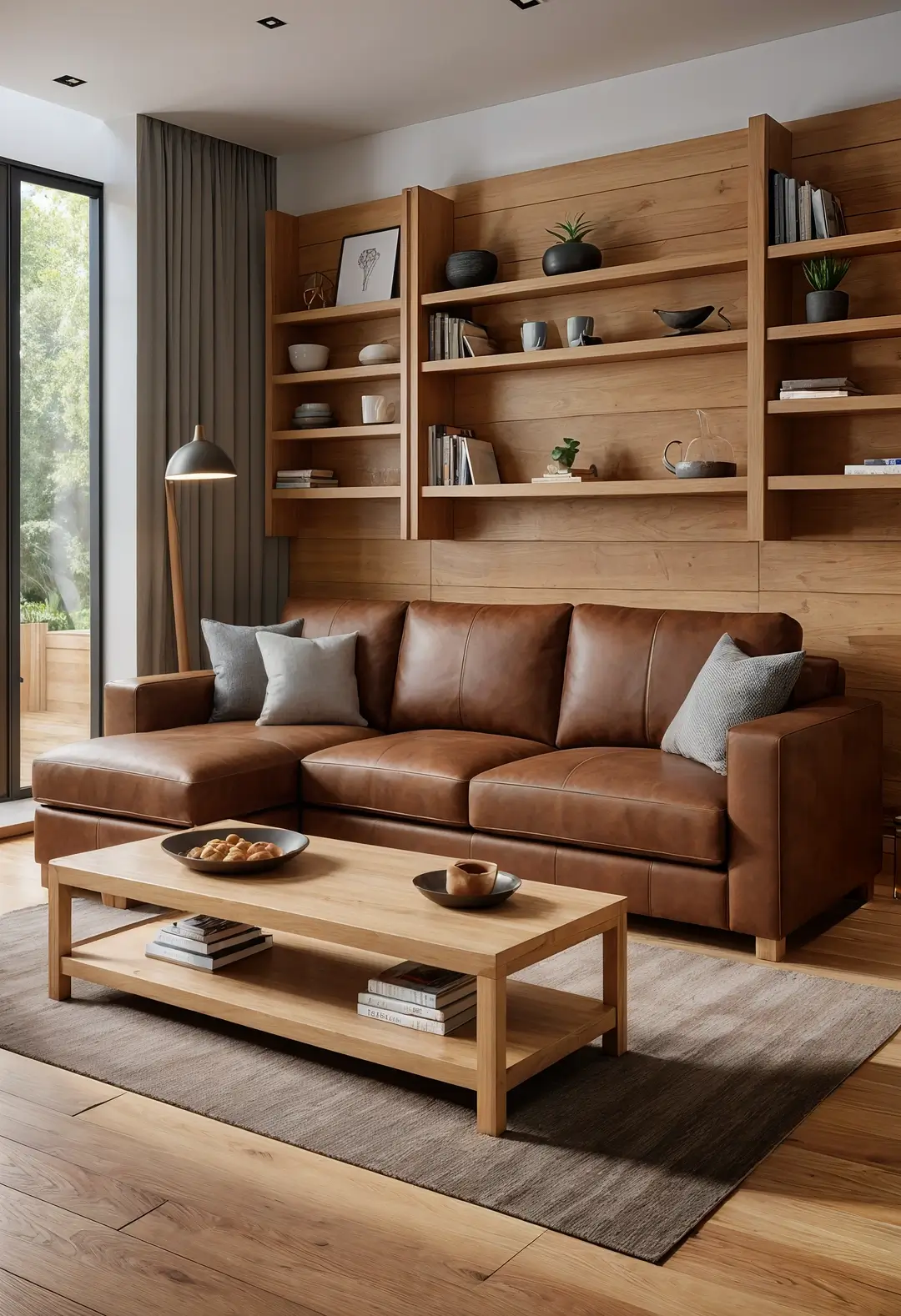
This classic combination often works well for homeowners drawn to warm, organic aesthetics. Wood furniture pieces typically complement brown leather’s natural tones while adding textural variety.
Design consideration: Lighter woods like oak often provide gentle contrast, while darker woods like walnut typically add depth and richness.
Why this works: Both materials often age beautifully, creating environments that improve over time.
3. Metallic Accent Enhancement
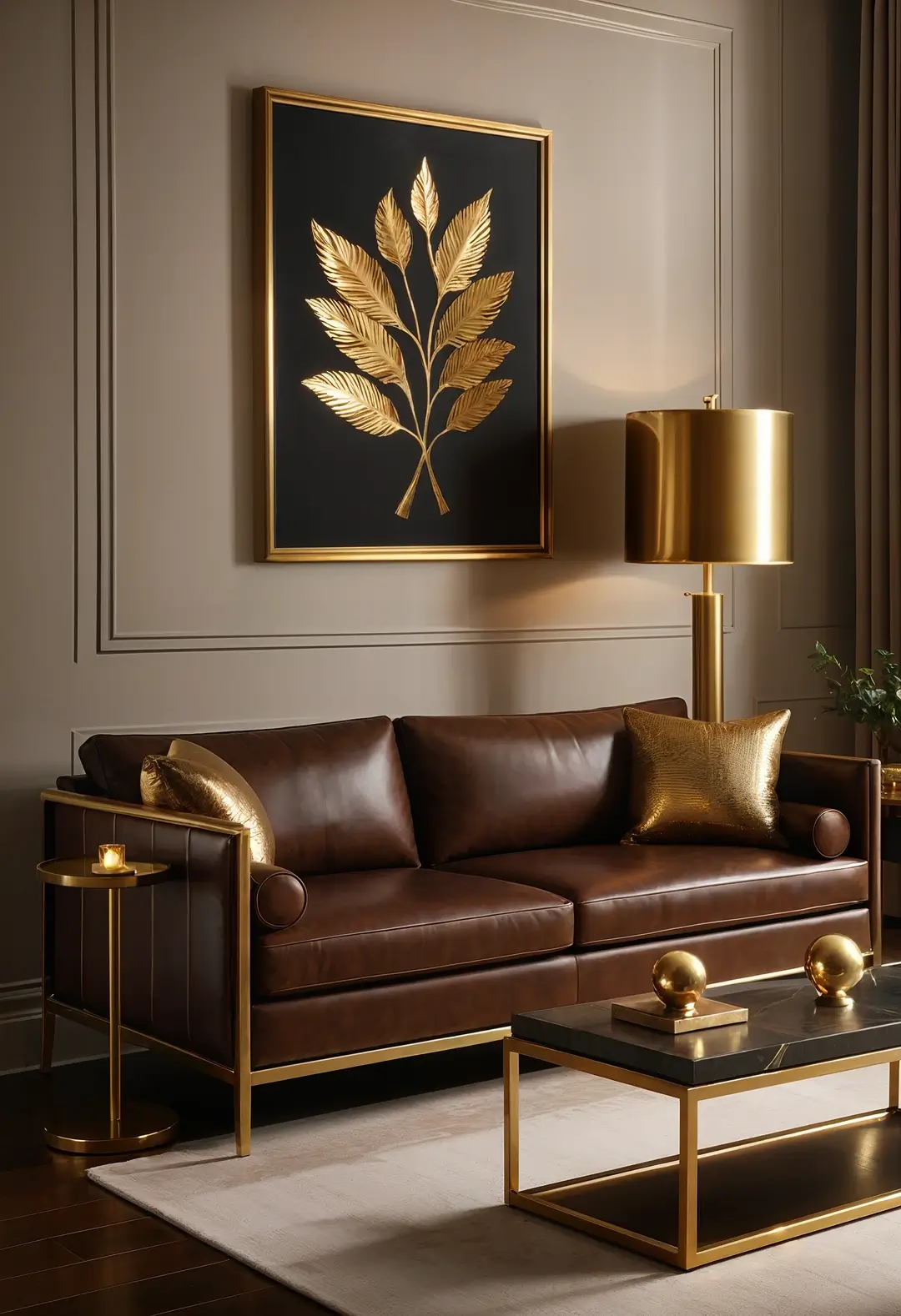
This sophisticated approach often appeals to homeowners wanting to add luxury touches. Gold, brass, or silver accessories typically create elegant contrast against brown leather’s matte finish.
What makes this effective: Metallic elements often reflect light, adding brightness and visual interest to the space.
Design benefit: These accents often make spaces feel more intentionally designed and upscale.
4. Bold Artwork Integration
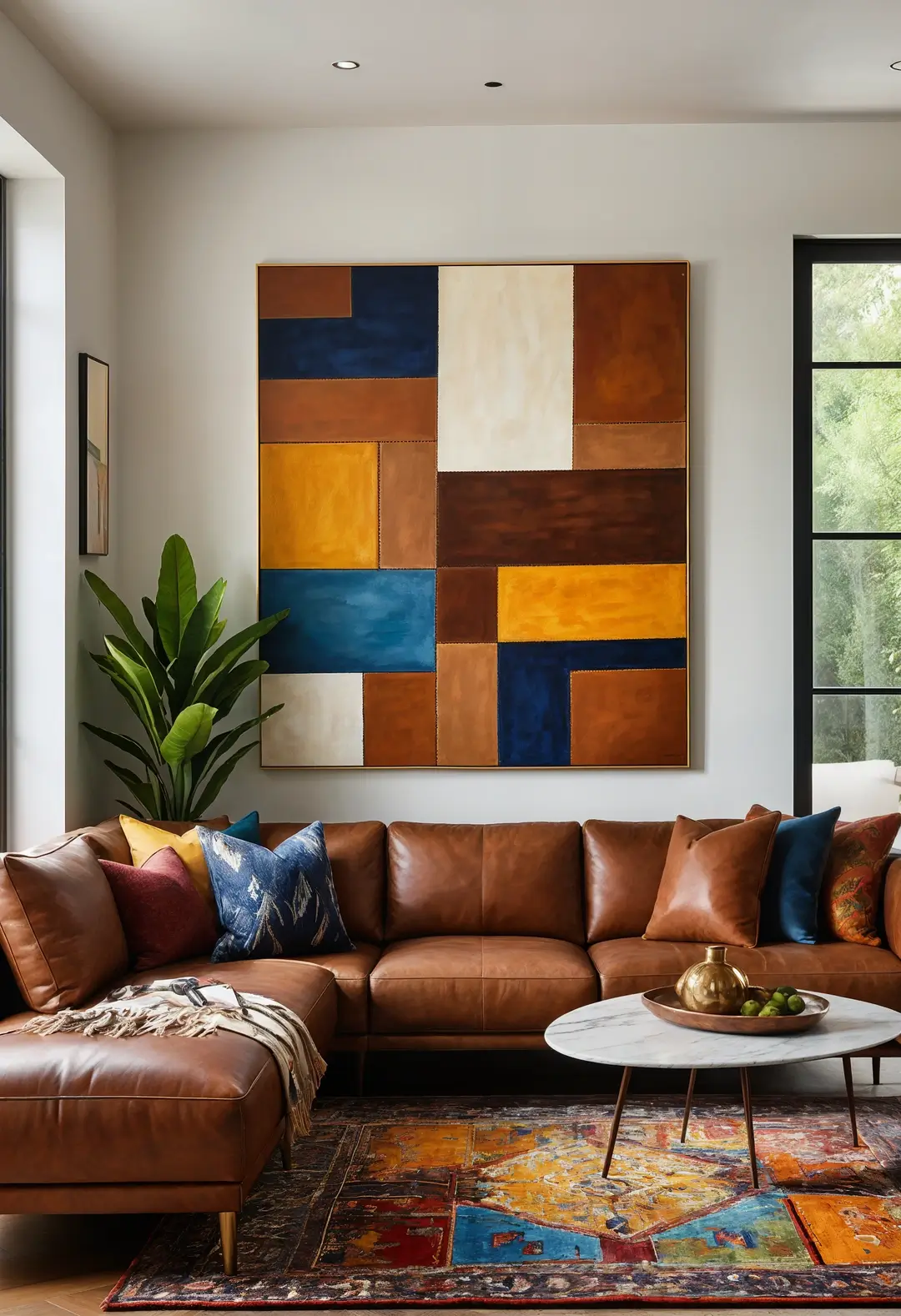
This artistic approach often works well for homeowners who appreciate visual drama. Large-scale artwork or gallery walls typically create compelling focal points above brown leather couches.
Design consideration: Vibrant colors or striking patterns often contrast beautifully with leather’s neutral tones.
What enhances this style: Abstract art or black-and-white photography often adds sophistication while allowing the leather to remain prominent.
5. Minimalist Design Focus
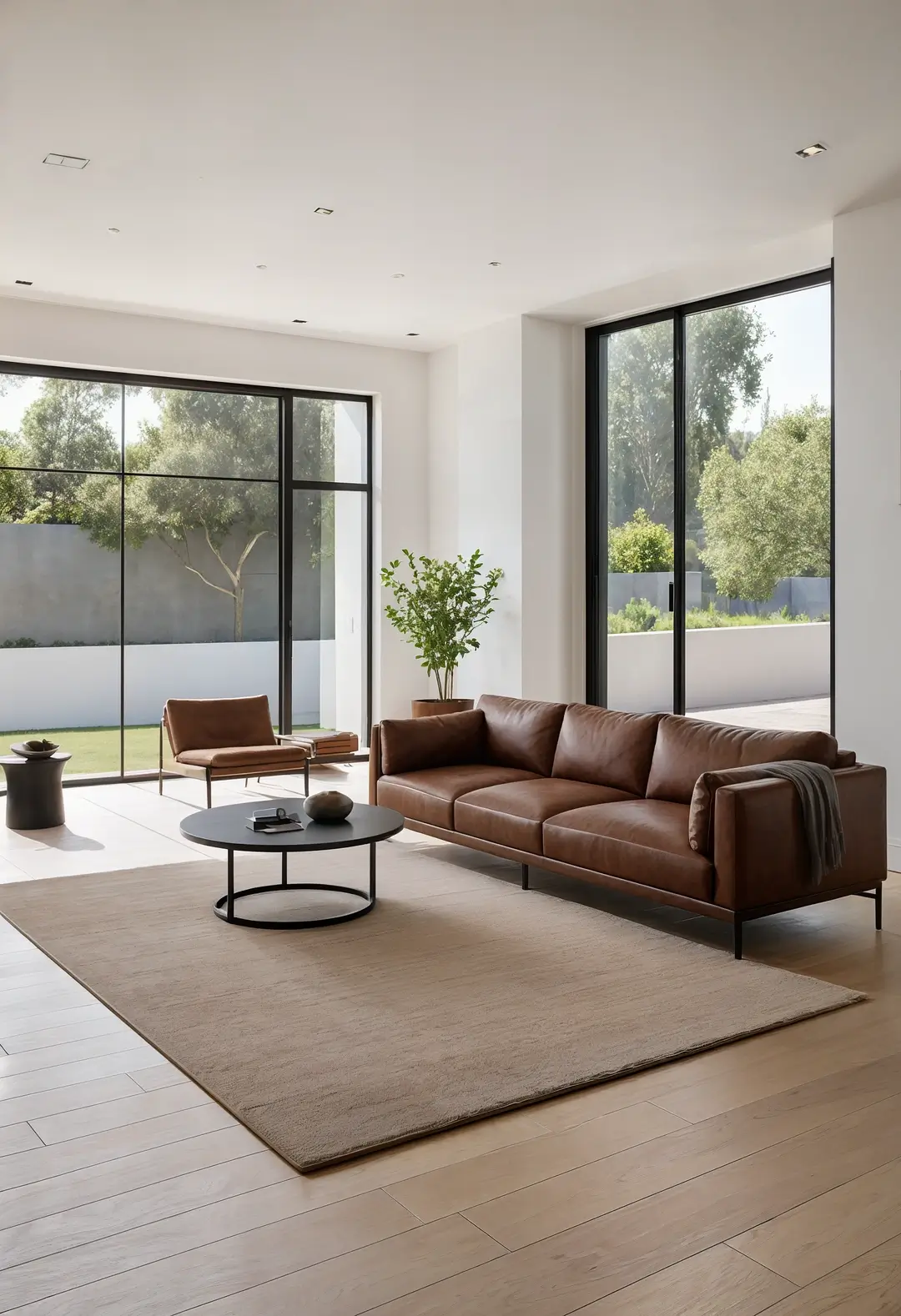
This streamlined approach often appeals to homeowners preferring clean, uncluttered spaces. Letting brown leather couches take center stage with minimal accessories typically creates serene, sophisticated environments.
Design principle: Quality over quantity often creates more impact than multiple decorative elements.
Color strategy: Neutral palettes in white, black, and beige often maintain the calm, modern aesthetic.
6. Textured Rug Foundation
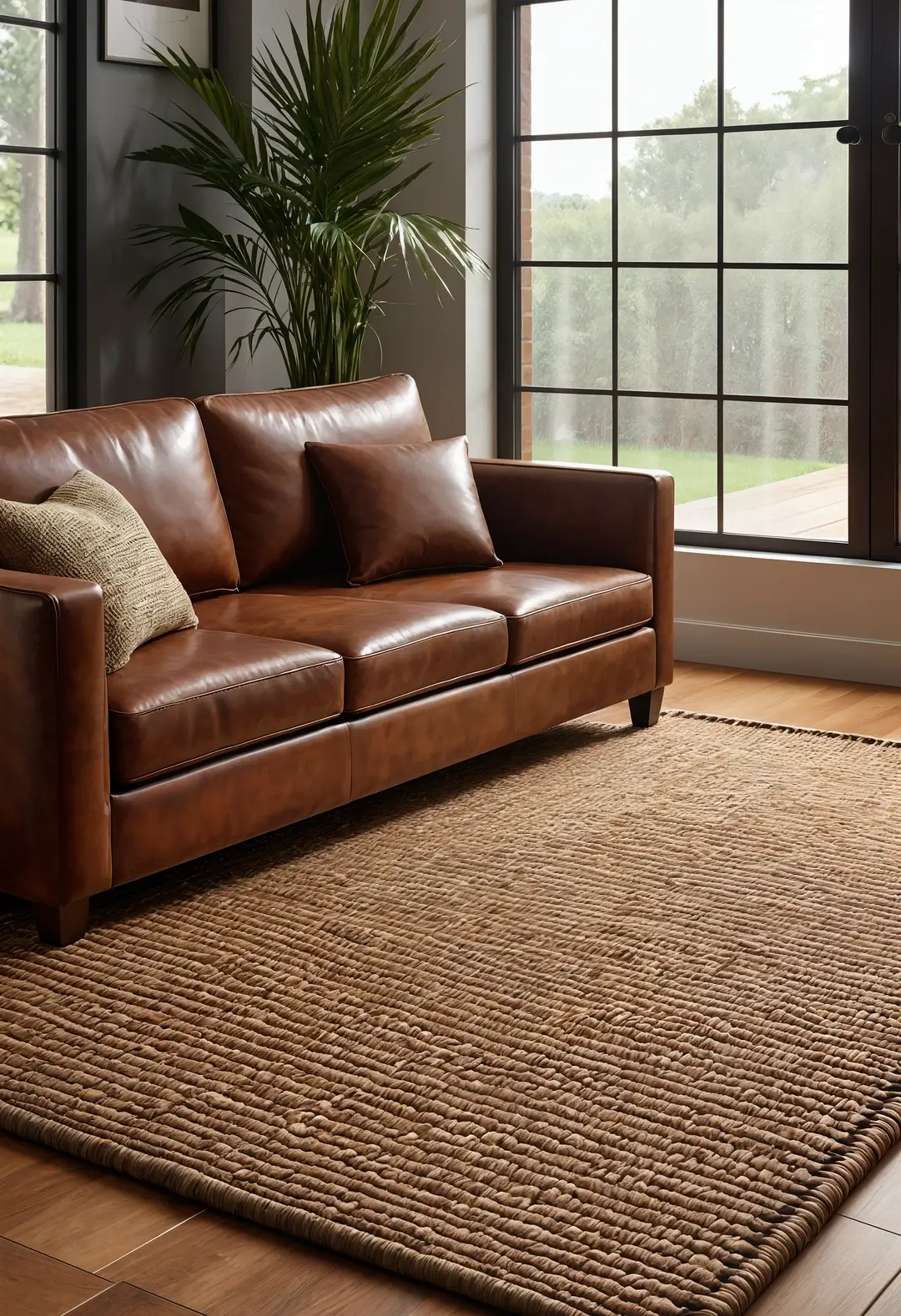
This grounding approach often works well for adding warmth and defining spaces. Natural fiber rugs like jute, sisal, or wool typically complement leather while adding tactile interest.
Design consideration: Light-colored rugs often balance brown leather’s richness, while patterned options typically add visual depth.
Practical benefit: Quality rugs often improve room acoustics while providing comfortable underfoot surfaces.
7. Cozy Reading Corner Creation
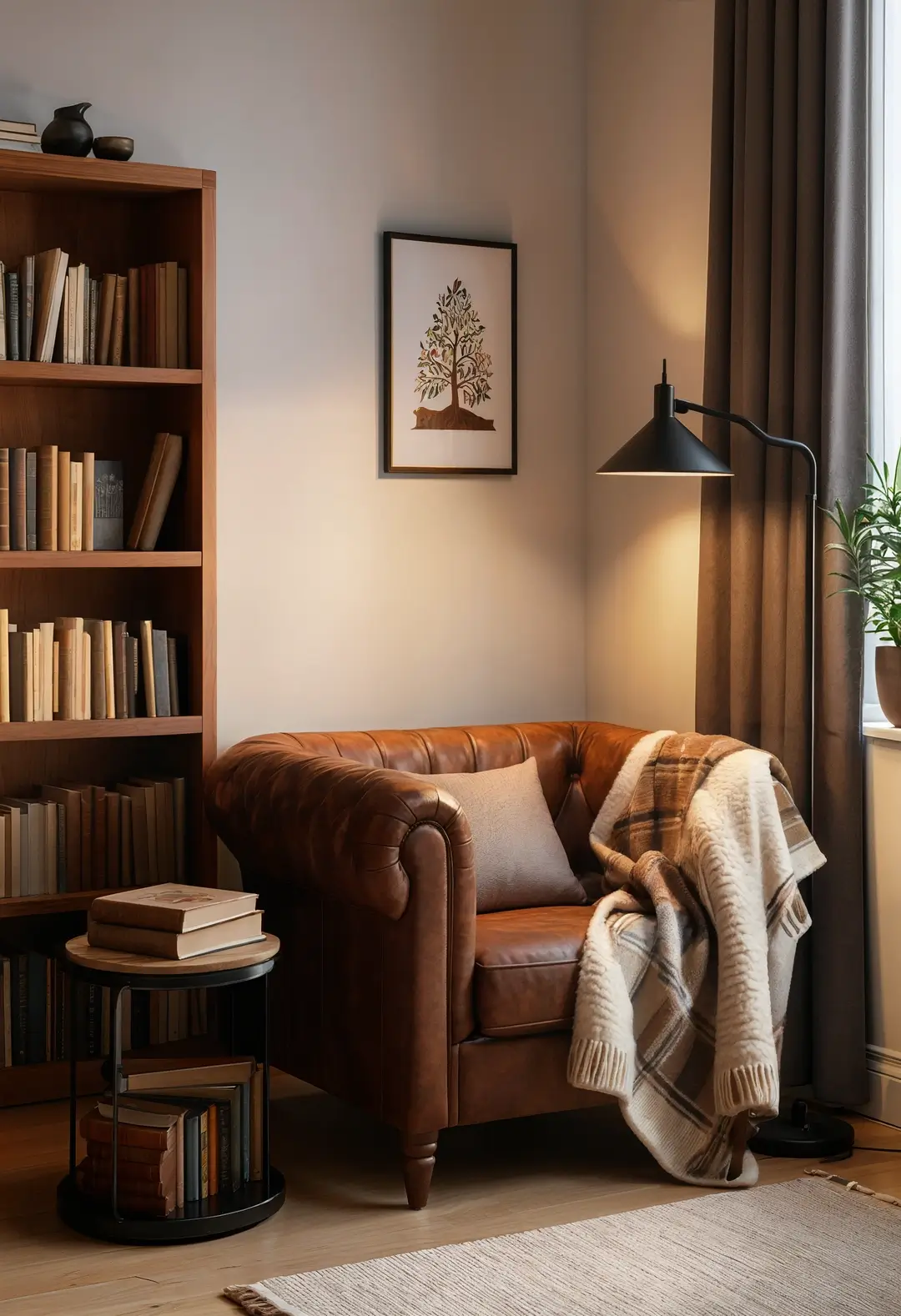
This functional approach often appeals to homeowners seeking comfortable, purposeful spaces. Positioning brown leather couches near windows or bookshelves typically creates inviting retreat areas.
Enhancement strategy: Soft lighting from floor or table lamps often creates the perfect reading atmosphere.
What makes this appealing: These corners often become favored family spaces for relaxation and conversation.
8. Monochromatic Tonal Scheme
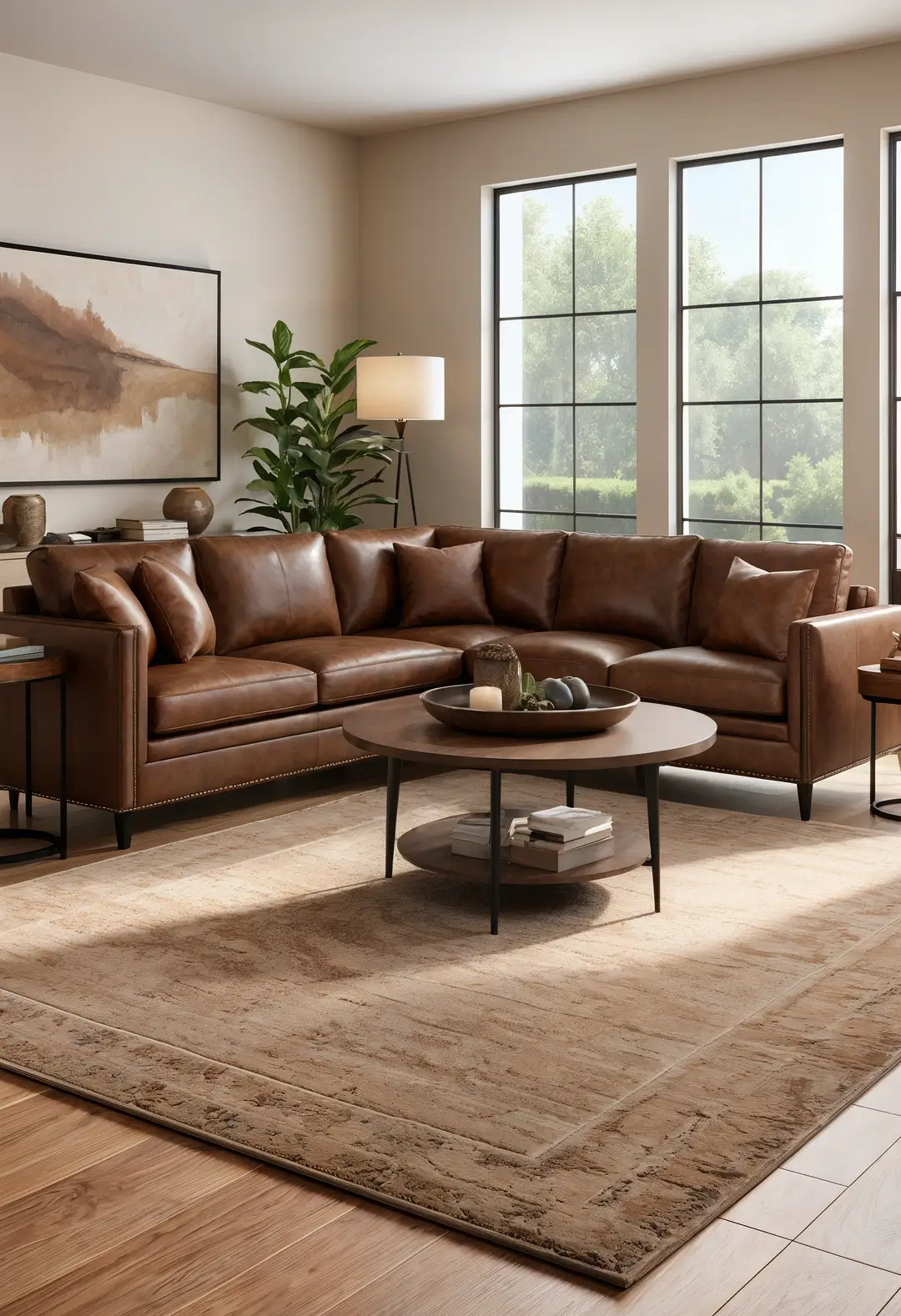
This sophisticated approach often works well for homeowners preferring cohesive, refined environments. Using varying shades of brown, tan, and beige typically creates elegant, unified spaces.
Design benefit: This palette often allows the leather’s natural beauty to shine while maintaining visual harmony.
Why this appeals to homeowners: Monochromatic schemes often feel both calming and sophisticated.
9. Vintage Style Integration
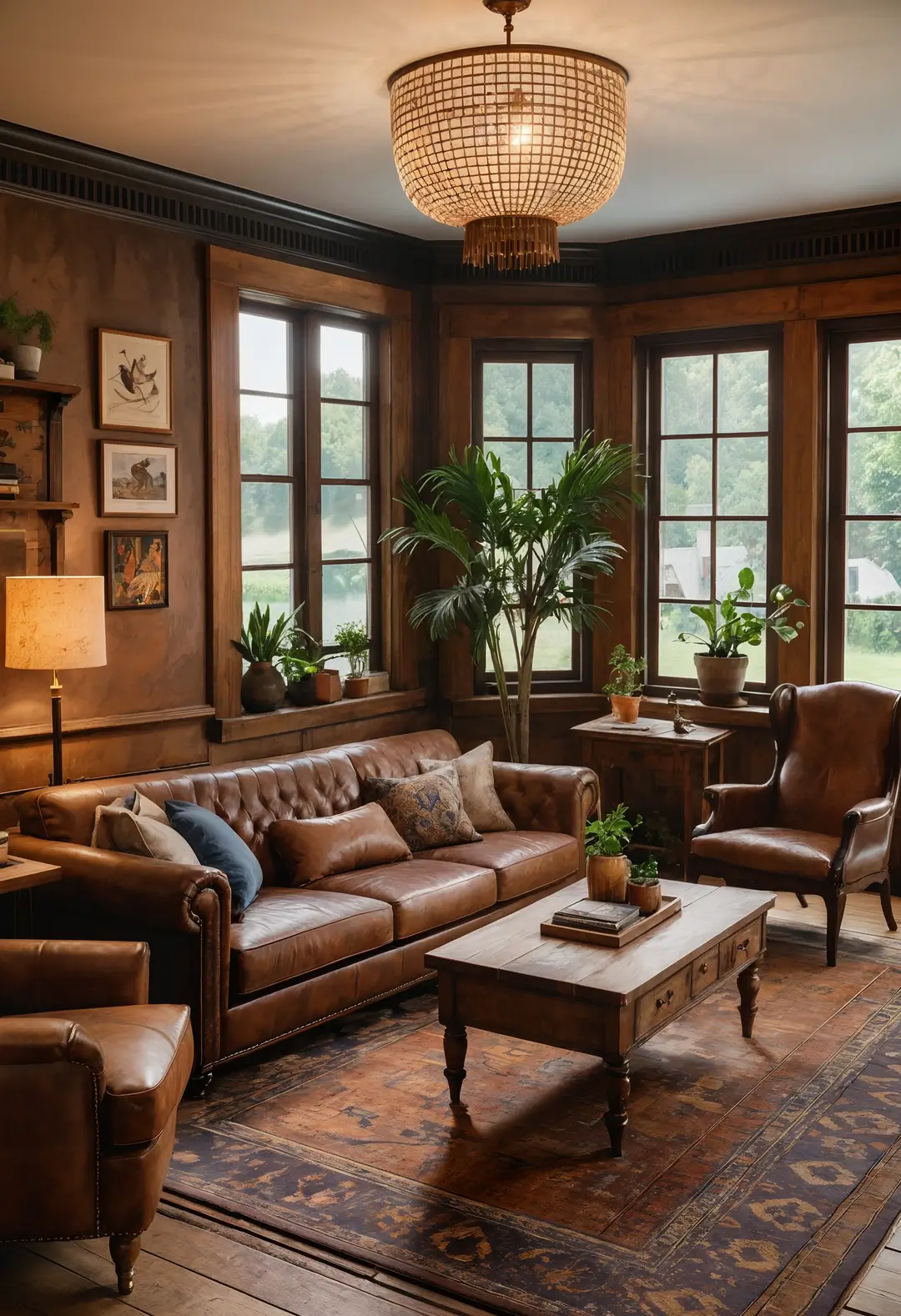
This characterful approach often appeals to homeowners who appreciate antique and retro elements. Combining brown leather couches with vintage accessories typically creates spaces with authentic charm.
Design consideration: Mixing old and new pieces often creates balanced, eclectic environments that feel collected over time.
What enhances this style: Vintage art and antique frames often complete the nostalgic atmosphere effectively.
10. Bold Window Treatment Strategy
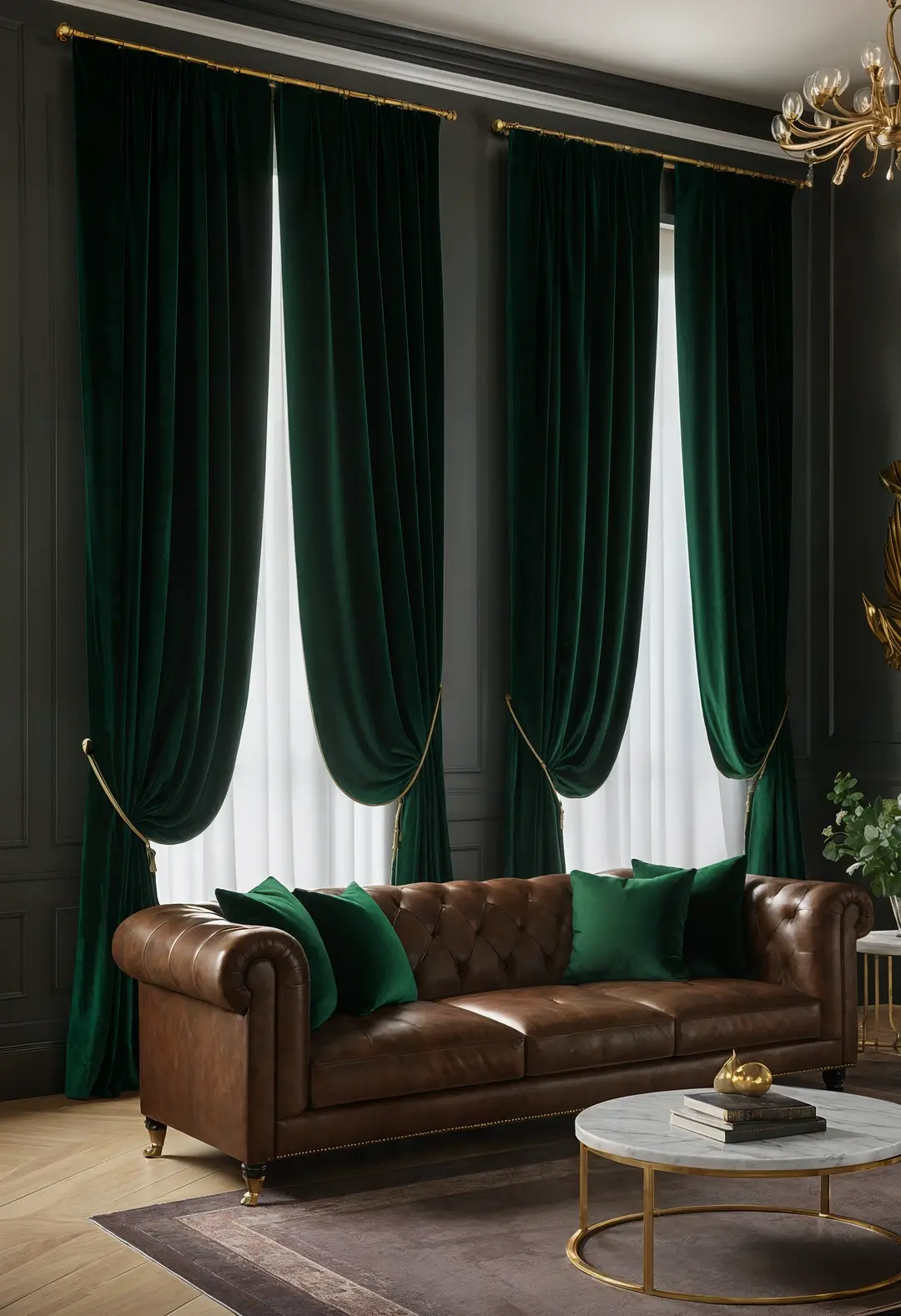
This dramatic approach often works well for homeowners wanting to make strong style statements. Bold-colored curtains in emerald, royal blue, or burnt orange typically create striking contrast against brown leather.
Fabric consideration: Velvet or silk curtains often add luxury that complements leather’s rich texture.
Design flexibility: Neutral alternatives in linen or cotton often work well for those preferring subtler approaches.
11. Living Plant Integration
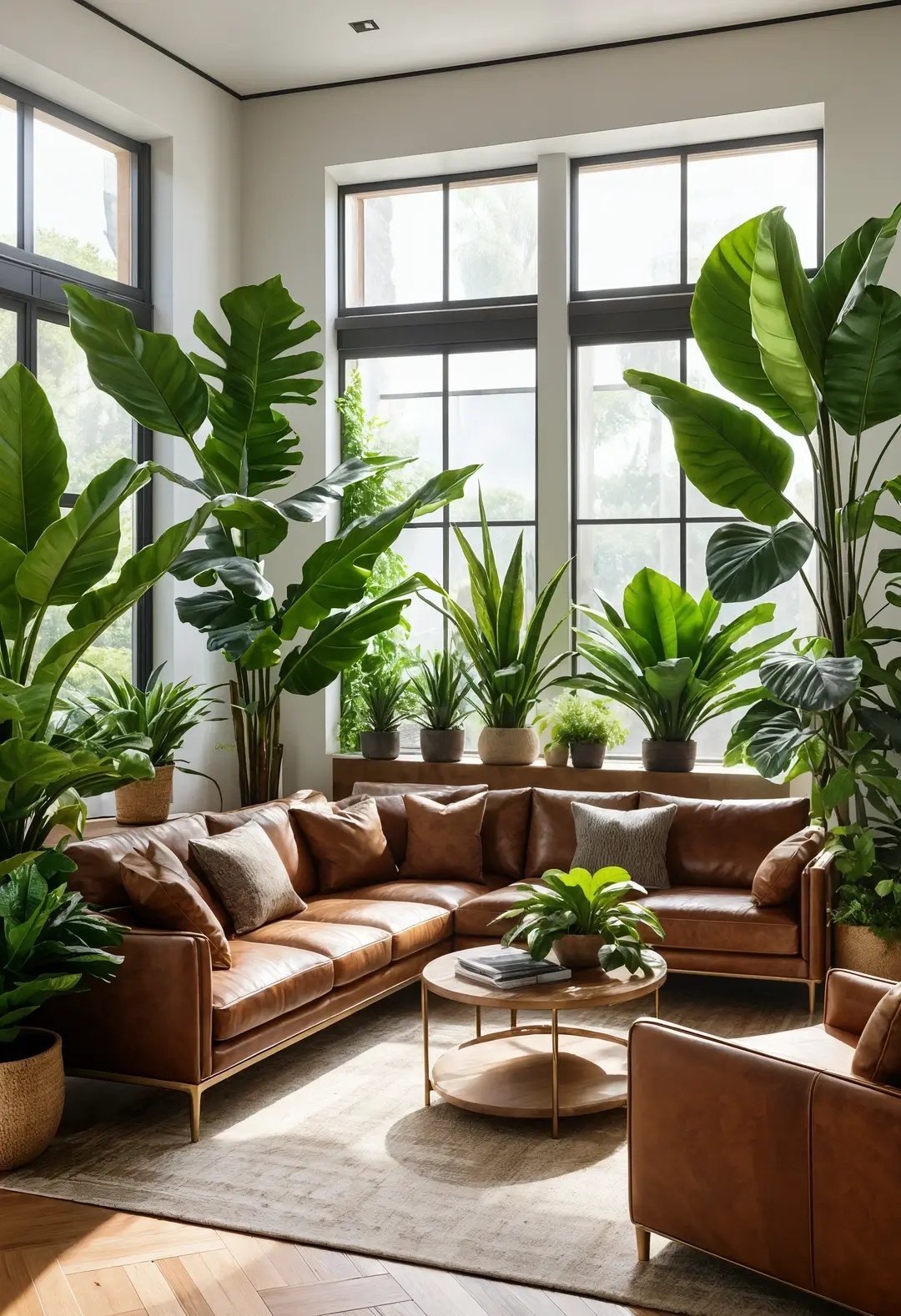
This organic approach often appeals to homeowners wanting to bring nature indoors. Varied plants typically complement brown leather’s earthy tones while adding life and color to spaces.
Design benefit: Plants often provide natural color contrast while improving indoor air quality.
Practical approach: Mixing plant sizes and varieties often creates visual interest without overwhelming the leather furniture.
12. Global Decor Influence
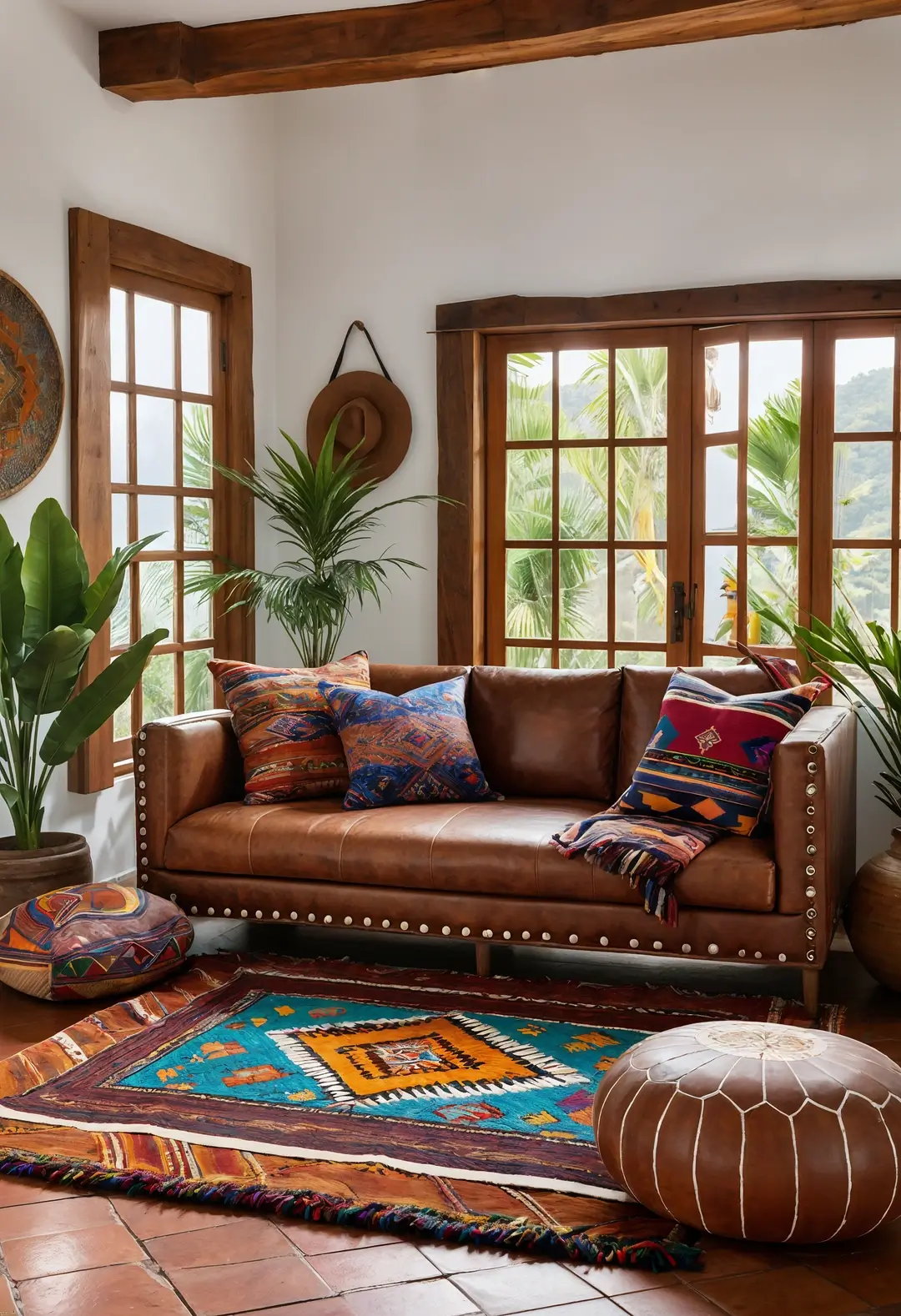
This worldly approach often works well for homeowners who appreciate diverse cultural elements. International textiles and accessories typically add color and pattern while maintaining sophistication.
Design consideration: Moroccan rugs, Peruvian textiles, and handmade crafts often create cosmopolitan atmospheres.
What makes this appealing: This style often allows for personal expression through collected pieces from travels or cultural interests.
13. Mixed Pattern Pillow Strategy
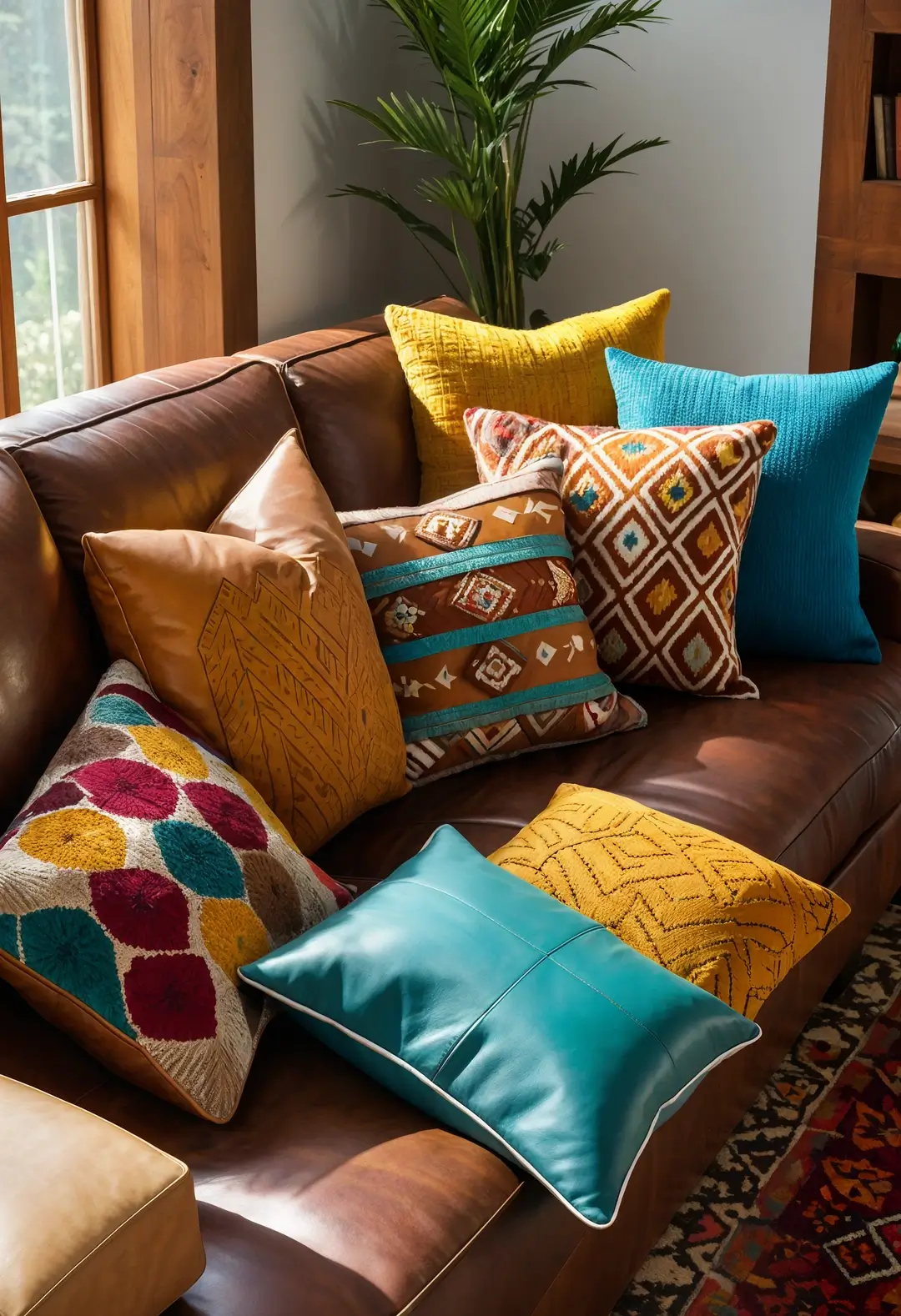
This layered approach often appeals to homeowners wanting visual interest without major investment. Combining solid colors, geometric prints, and varied textures typically creates dynamic, engaging arrangements.
Color strategy: Jewel tones often create striking contrast, while earthy tones typically provide warm, autumn-inspired palettes.
Design consideration: Balancing pattern scales often prevents the arrangement from feeling chaotic or overwhelming.
14. Industrial Style Combination
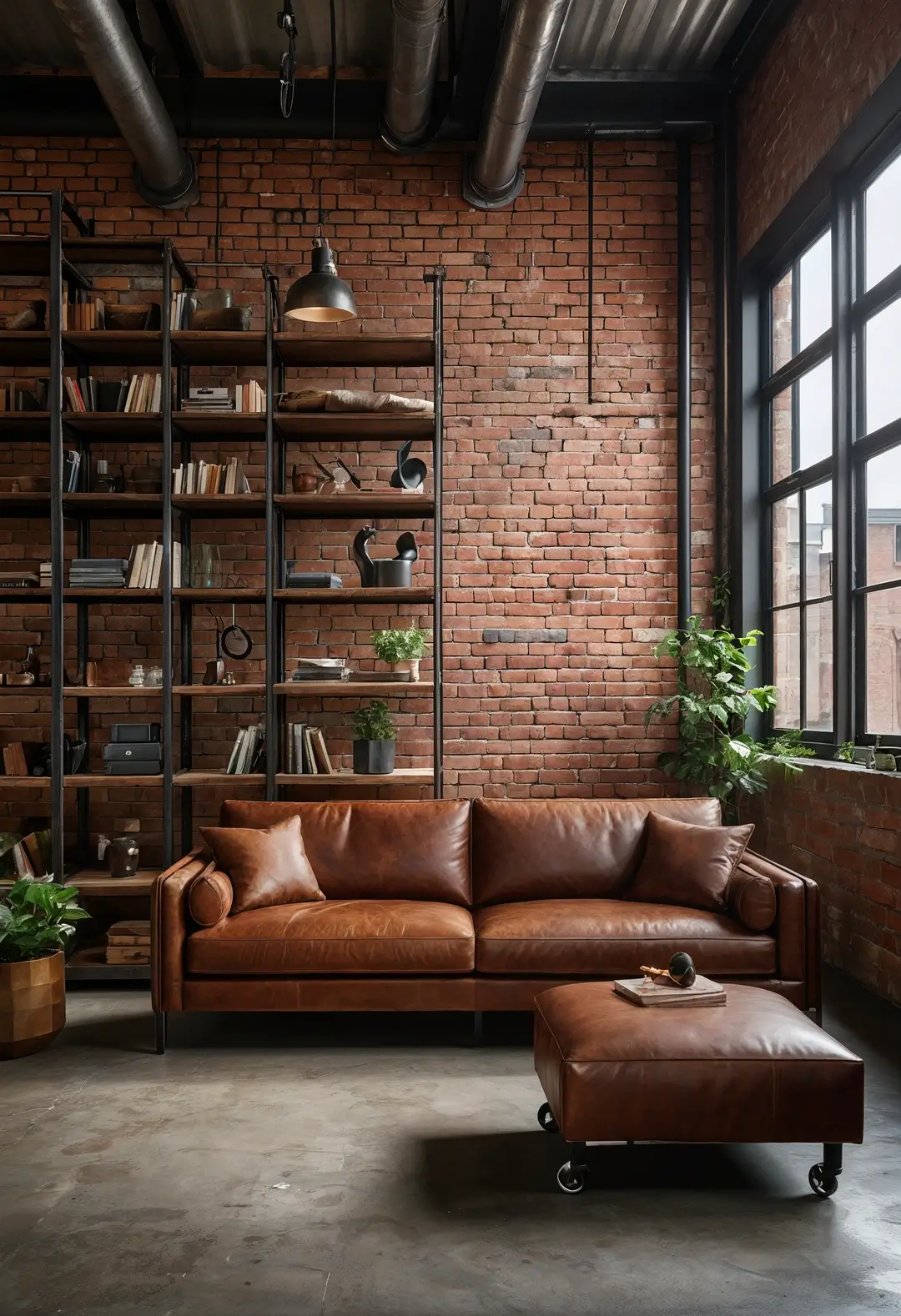
This urban approach often works well for homeowners drawn to contemporary, edgy aesthetics. Steel shelving, metal lamps, and exposed brick typically complement leather’s rugged qualities.
Design balance: Industrial materials often provide contrast while leather adds necessary warmth to potentially harsh environments.
Why this works: The combination often feels both sophisticated and authentically urban.
15. Strategic Lighting Enhancement
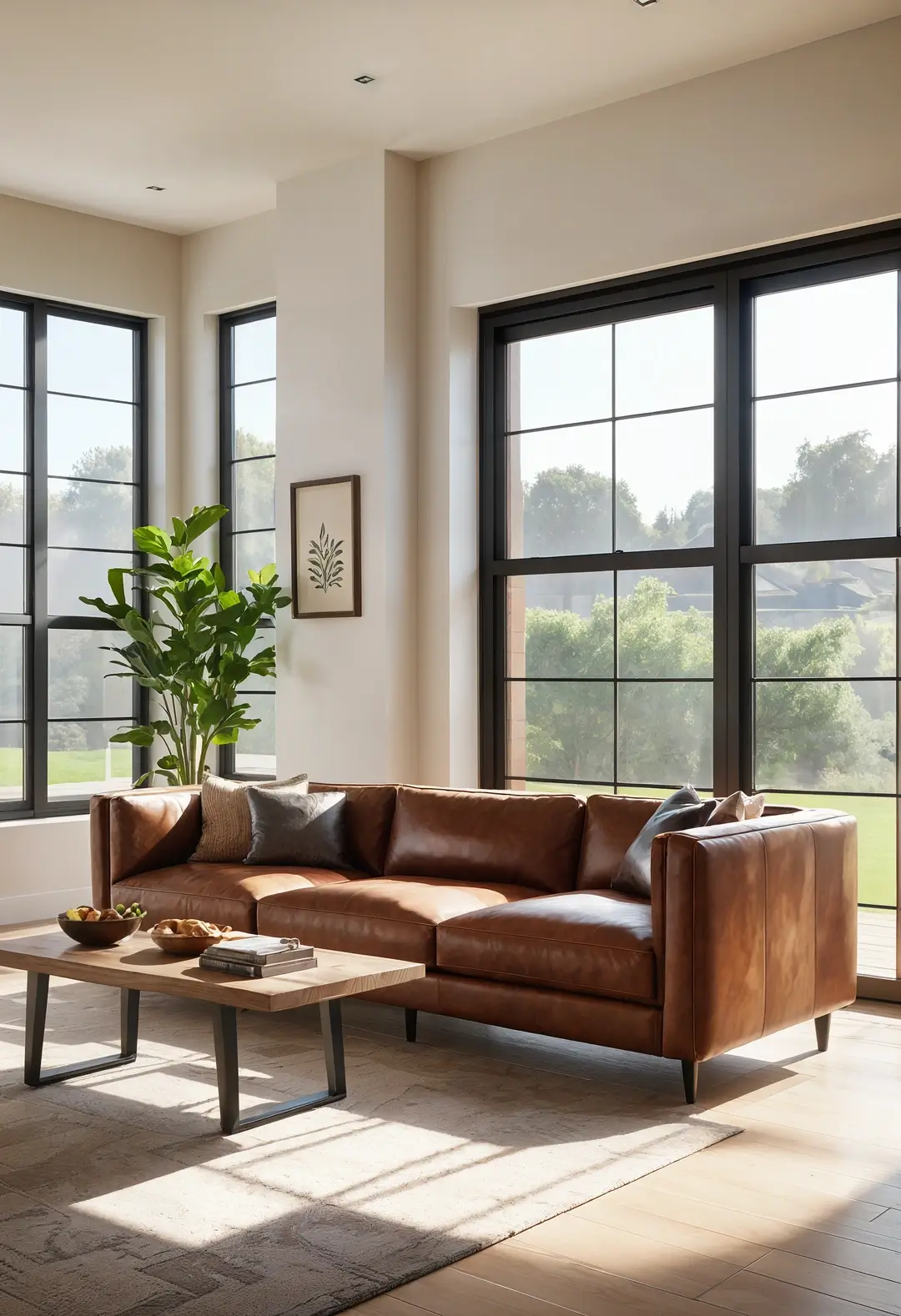
This foundational approach often appeals to homeowners wanting to optimize leather’s appearance. Proper lighting typically prevents leather furniture from feeling heavy while highlighting its rich texture.
Lighting strategy: Combining ambient, task, and accent lighting often creates warm, welcoming atmospheres.
Design consideration: Warm bulbs often enhance leather’s natural richness while providing comfortable illumination.
16. Mid-Century Modern Integration
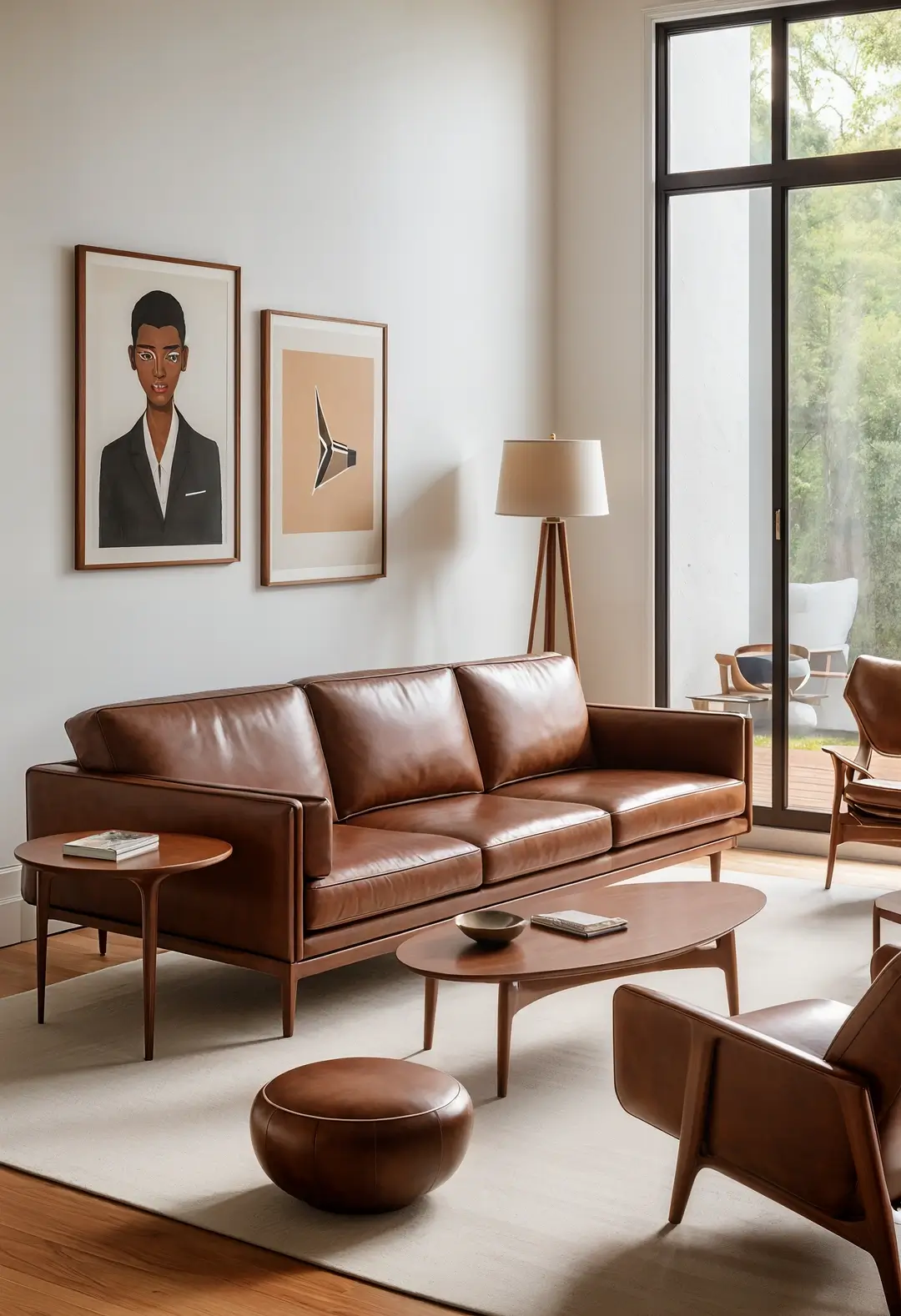
This timeless approach often works well for homeowners appreciating classic modern design. Clean-lined furniture with geometric shapes typically complements leather’s sophisticated simplicity.
Design principle: Simple, functional pieces often allow the leather’s quality to take prominence.
What makes this effective: The combination often feels both retro and contemporary, appealing to various aesthetic preferences.
17. Statement Mirror Strategy
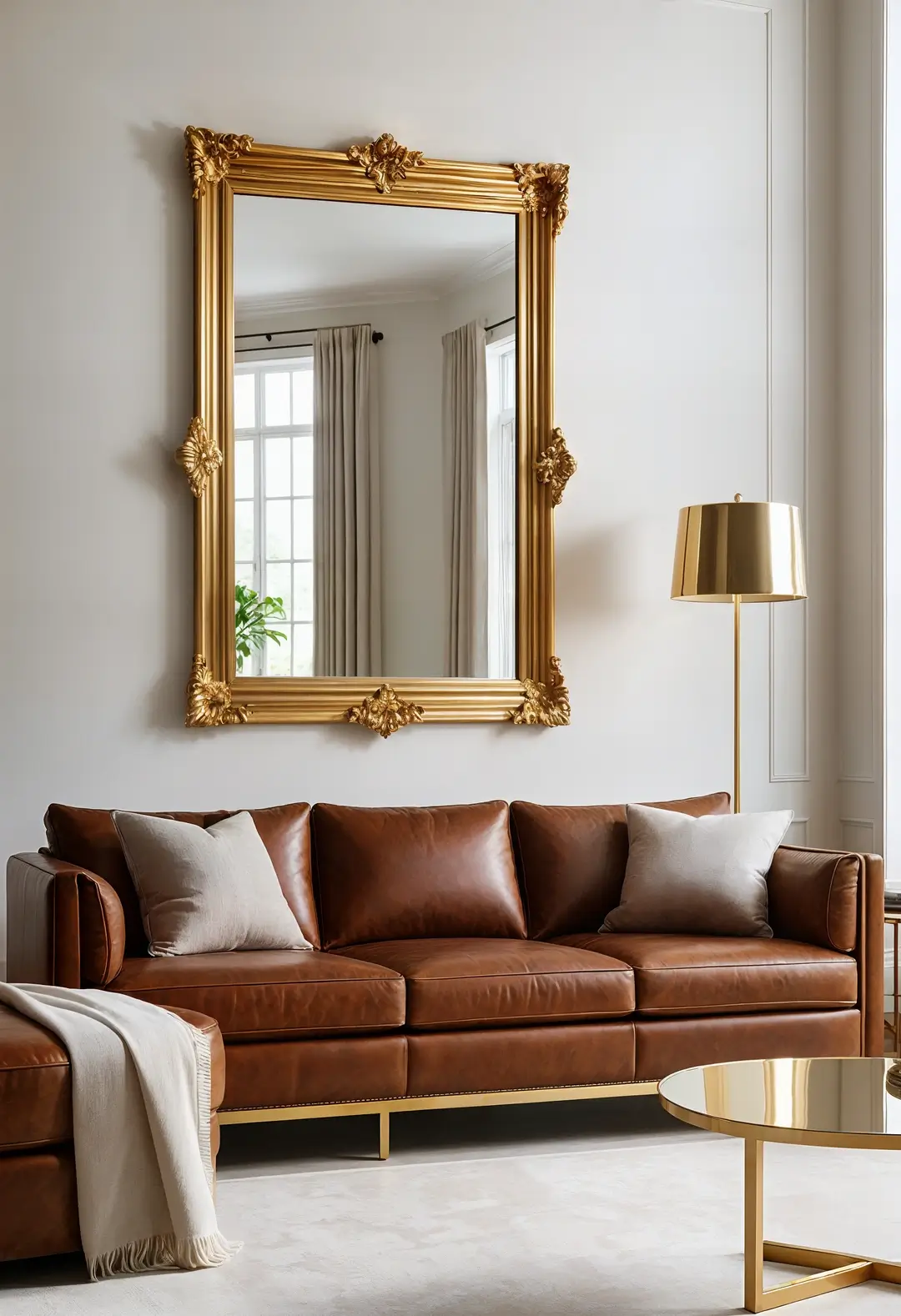
This space-enhancing approach often appeals to homeowners wanting to brighten and expand rooms. Large mirrors with bold frames typically reflect light while adding architectural interest.
Design benefit: Mirrors often make spaces feel larger and more open while adding decorative impact.
Frame consideration: Gold or dark wood frames often complement brown leather while adding elegant finishing touches.
18. Layered Floor Textile Approach
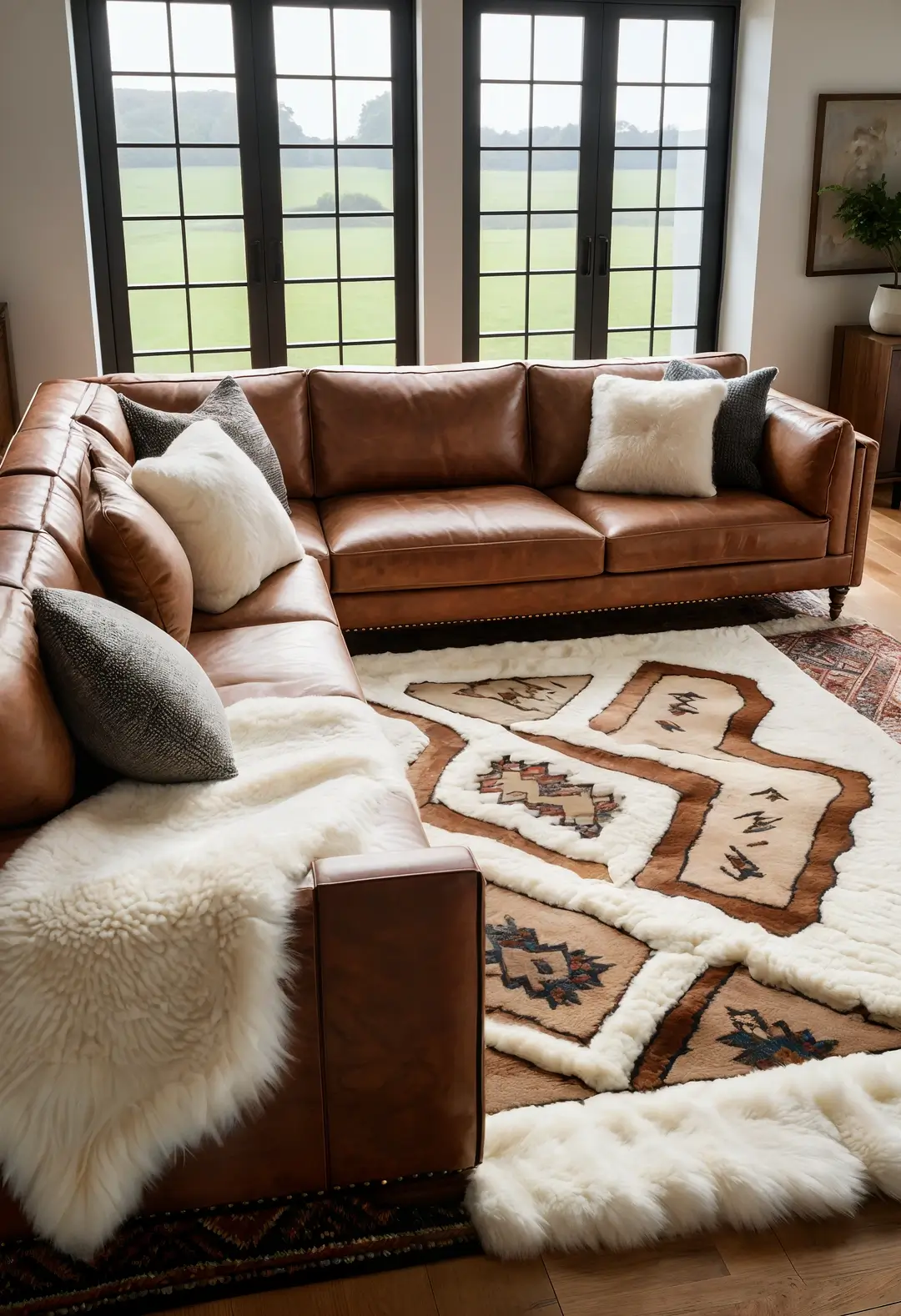
This cozy strategy often works well for homeowners seeking intimate, welcoming environments. Multiple textile layers like sheepskin or faux fur typically add warmth and tactile contrast.
Design benefit: Soft textures often balance leather’s smooth surface while creating inviting, comfortable spaces.
Practical consideration: These layers often help define conversation areas in open floor plans.
19. Geometric Pattern Integration
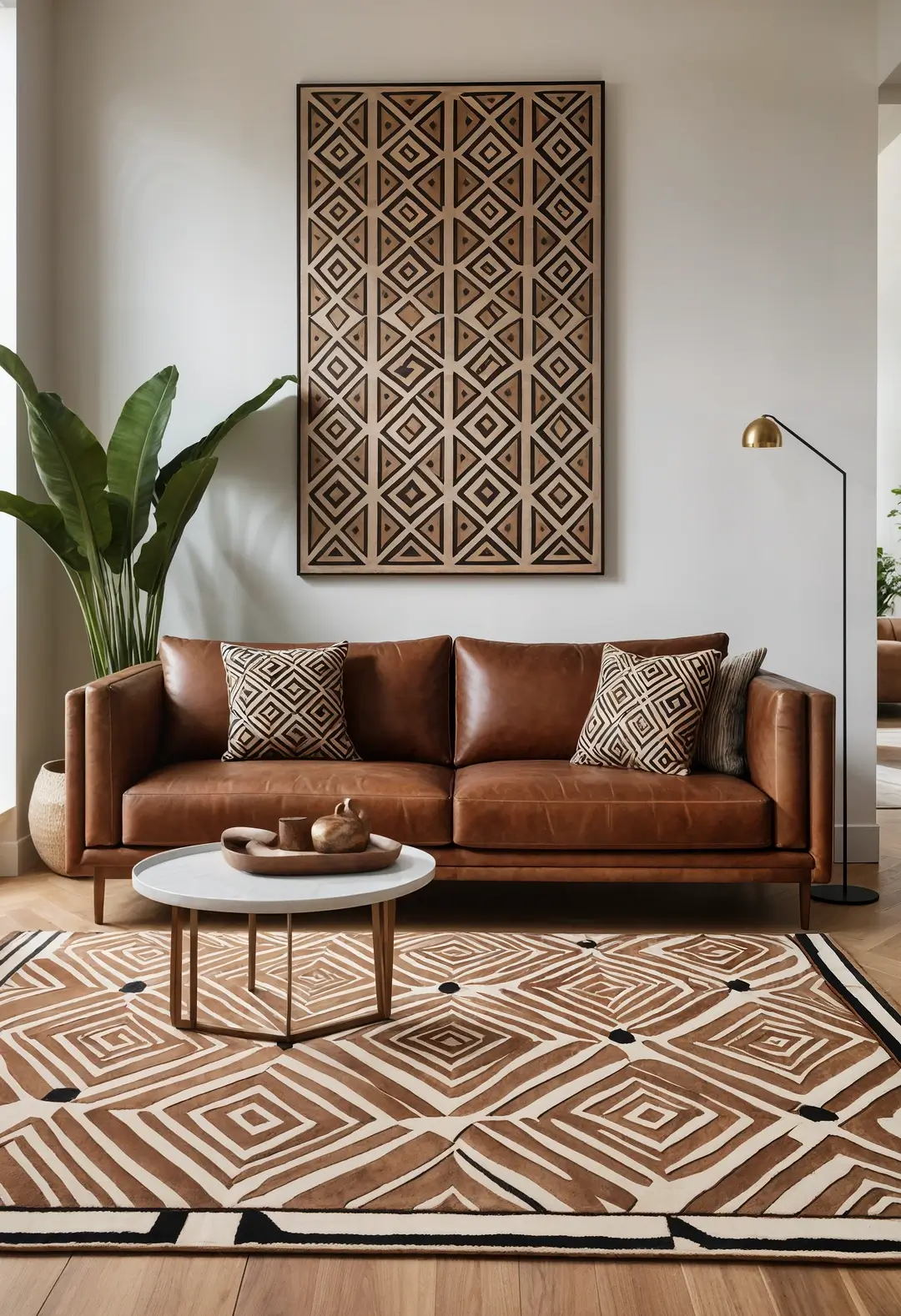
This contemporary approach often appeals to homeowners wanting modern flair. Geometric patterns in rugs, pillows, or artwork typically add visual interest while maintaining sophistication.
Design consideration: Sharp lines or abstract patterns often create compelling contrast against leather’s organic qualities.
What makes this effective: Geometric elements often serve as focal points while allowing leather to provide grounding.
20. Fireplace Focal Point Creation
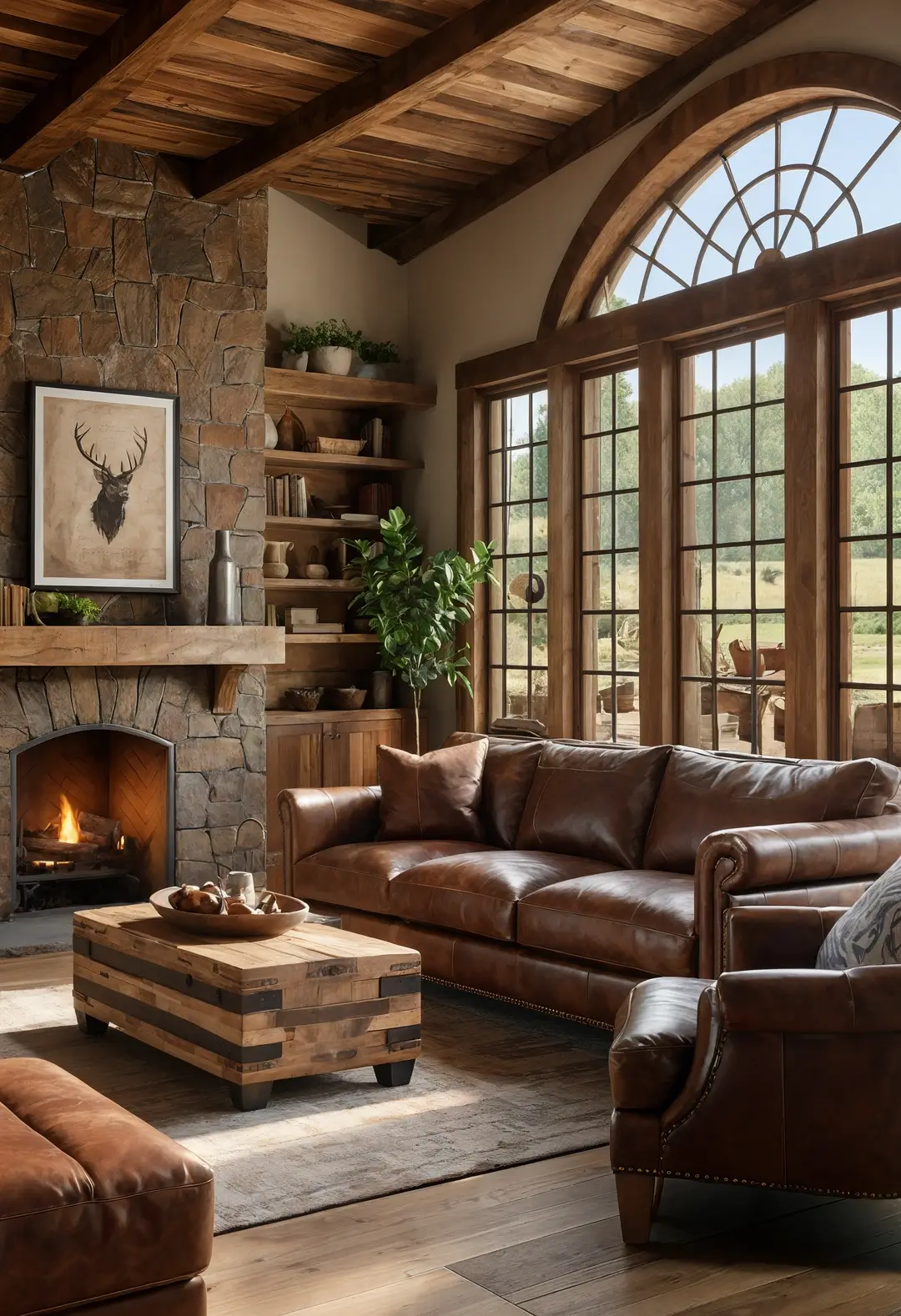
This cozy approach often works well for homeowners with existing fireplaces. Positioning brown leather couches to face fireplaces typically creates intimate, welcoming gathering spaces.
Design benefit: The combination often provides both visual warmth and practical comfort for relaxation.
Enhancement strategy: This arrangement often becomes the natural center for family activities and entertaining.
21. Dramatic Dark Tone Strategy
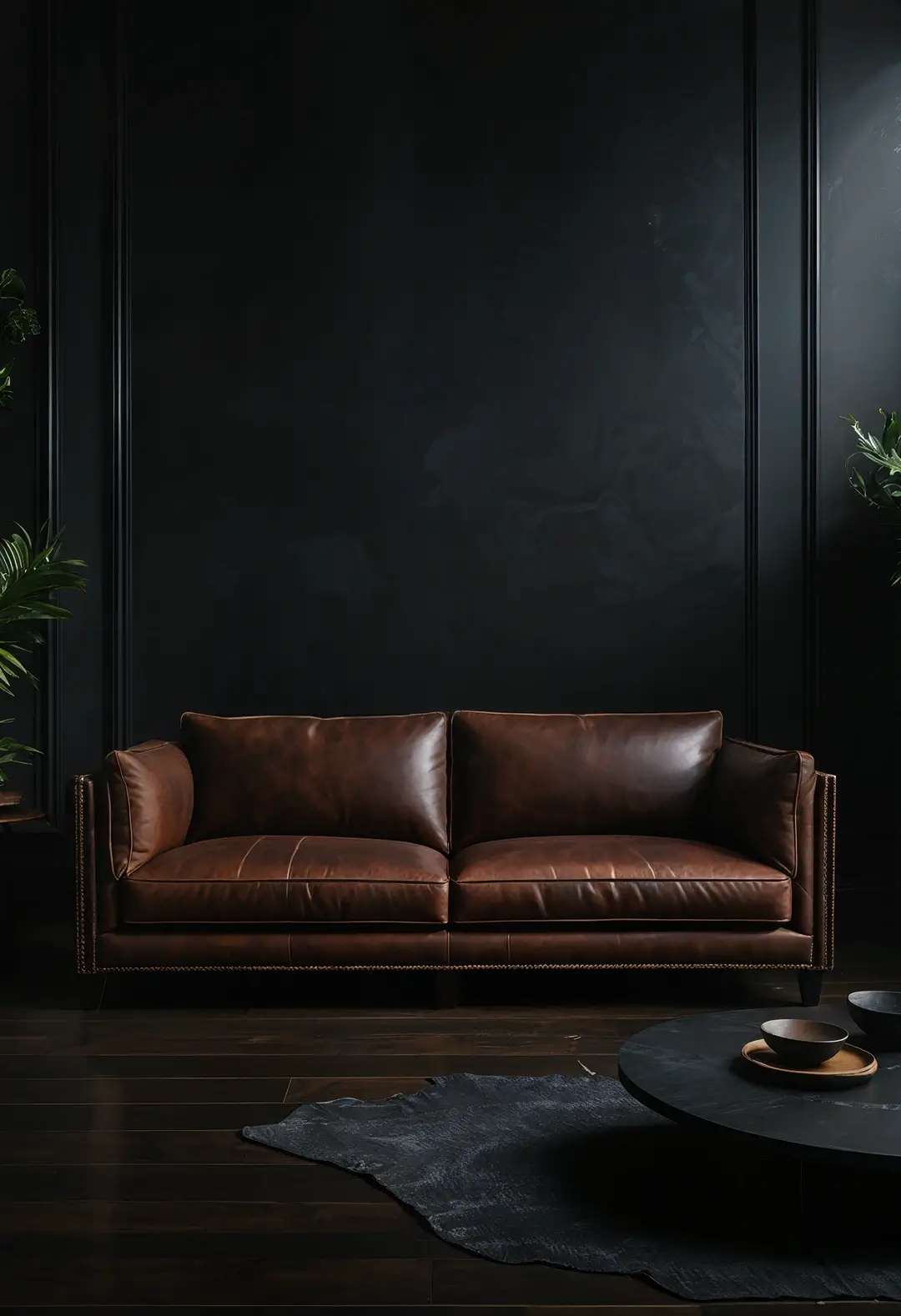
This sophisticated approach often appeals to homeowners wanting luxurious, moody environments. Deep charcoal walls or dark furniture typically highlight brown leather’s richness through contrast.
Design consideration: Adequate lighting becomes crucial with darker color schemes to maintain comfortable ambiance.
What makes this appealing: This palette often feels both opulent and intimate, suitable for formal entertaining.
22. Rustic Elegance Development
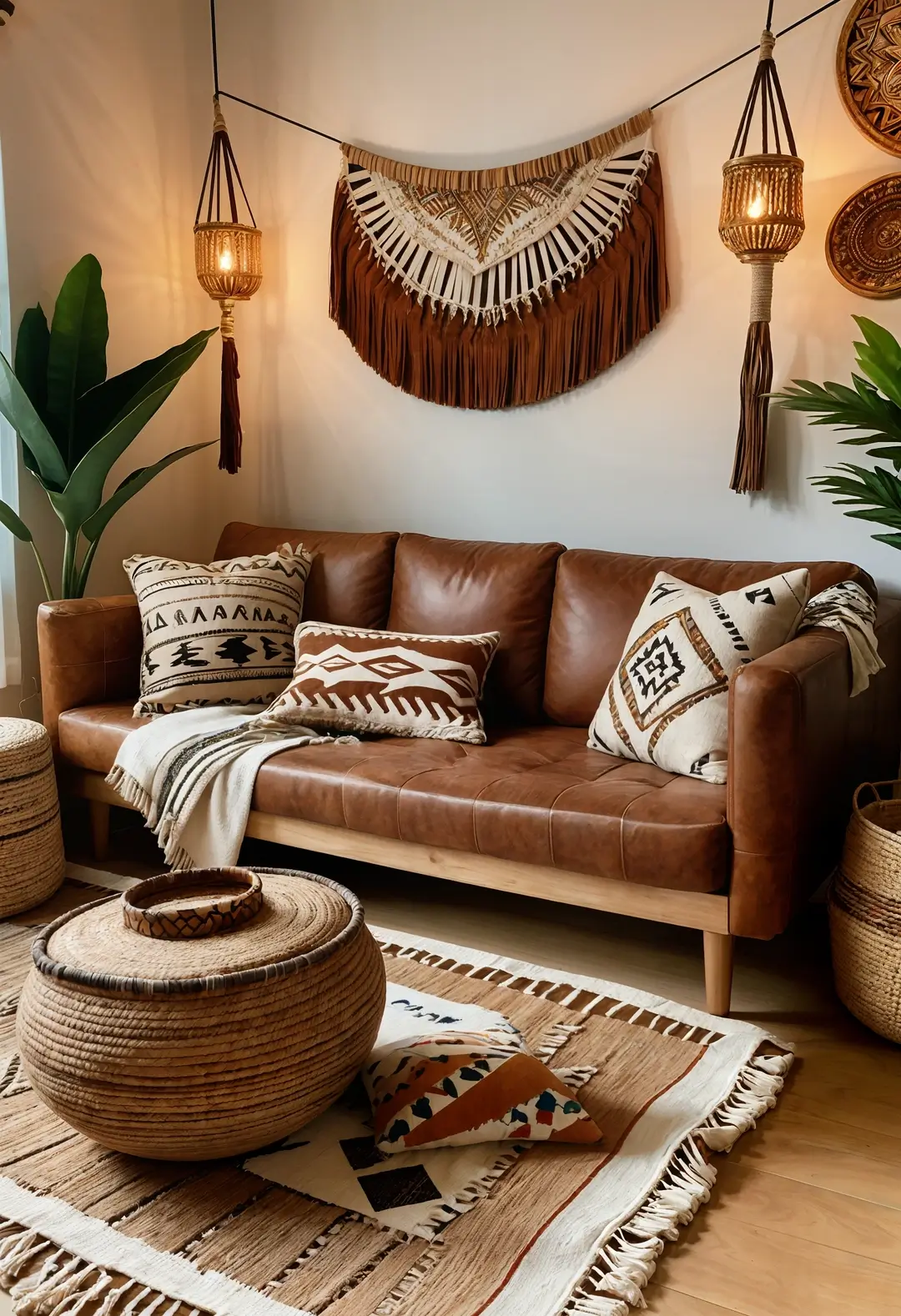
This characterful approach often works well for homeowners drawn to natural, authentic aesthetics. Weathered wood and stone accents typically complement leather while adding organic texture.
Design enhancement: Vintage-inspired elements often complete the rustic atmosphere while maintaining sophistication.
Why this appeals to homeowners: This style often feels both welcoming and timeless, improving with natural aging.
23. Symmetrical Arrangement Strategy
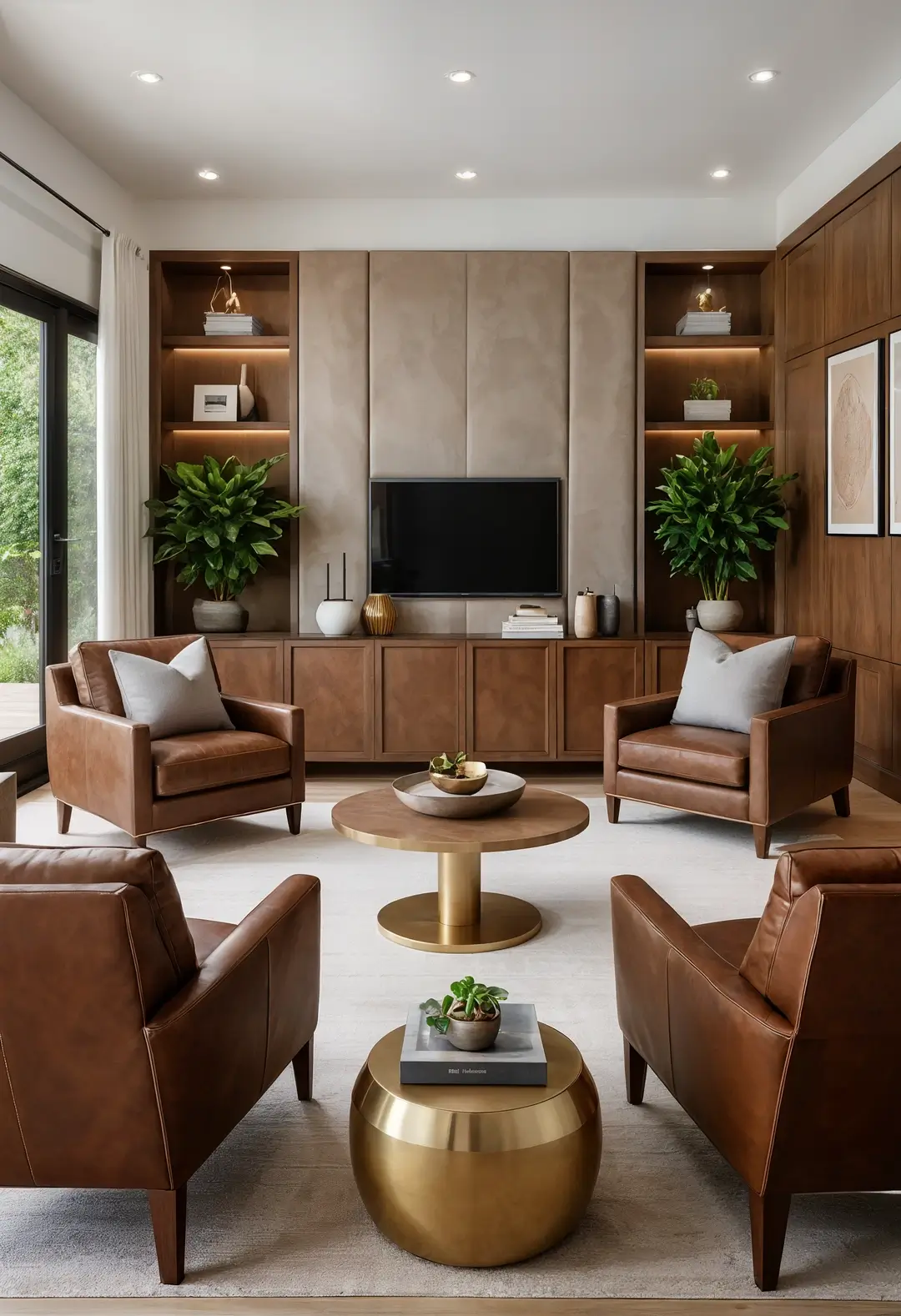
This balanced approach often appeals to homeowners preferring organized, harmonious layouts. Matching accent chairs flanking leather couches typically create visually satisfying, cohesive arrangements.
Design benefit: Symmetry often creates calm, ordered environments that feel intentionally designed.
Practical consideration: This arrangement often works well for conversation and formal entertaining needs.
24. Subtle Pattern Integration
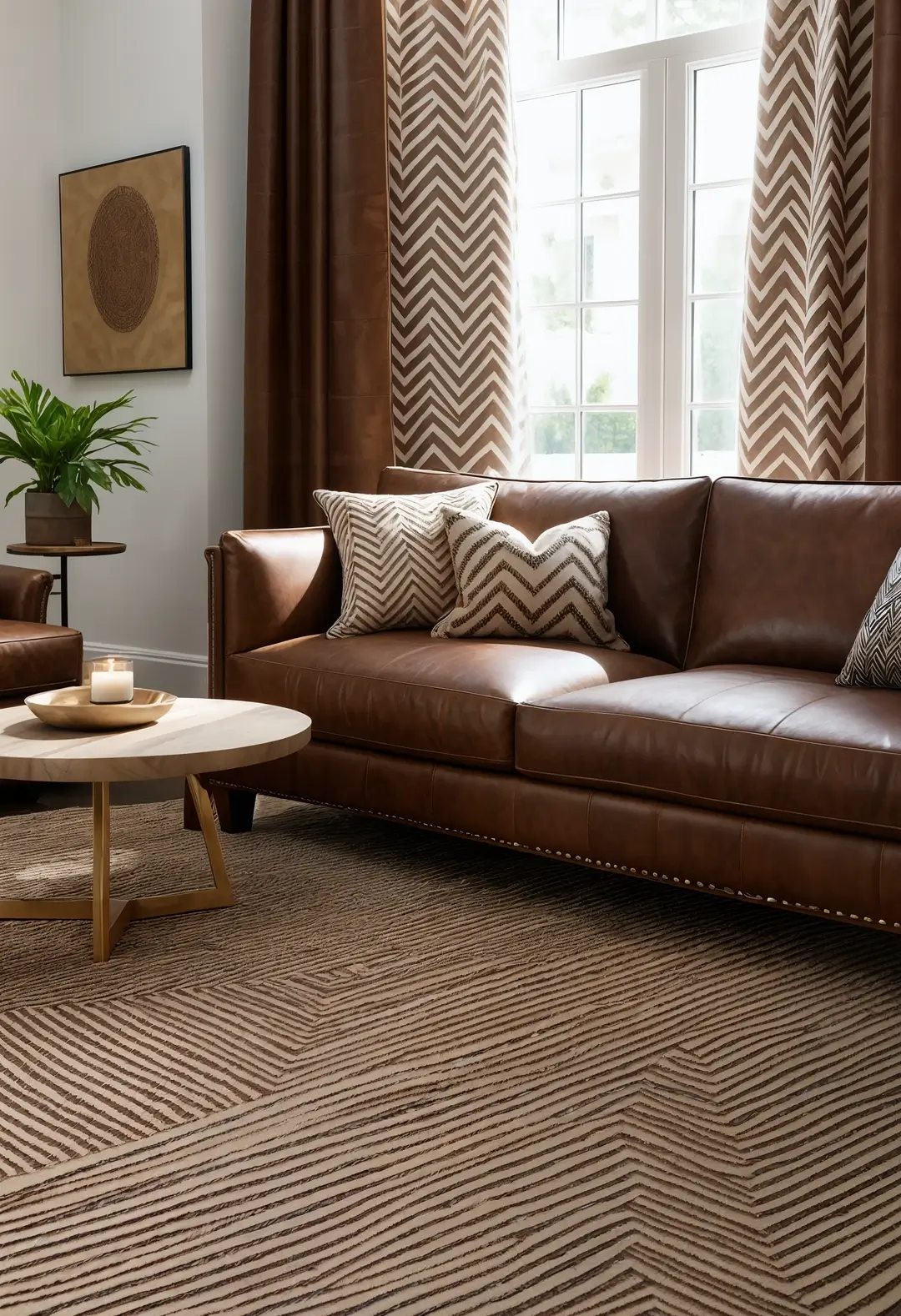
This refined approach often works well for homeowners wanting sophistication without drama. Delicate stripes, herringbone, or chevron patterns typically add depth while maintaining elegance.
Design consideration: Subtle patterns often provide visual interest without competing with leather’s natural beauty.
What makes this effective: These patterns often feel both classic and contemporary, appealing to various design preferences.
25. Matching Leather Ottoman Addition
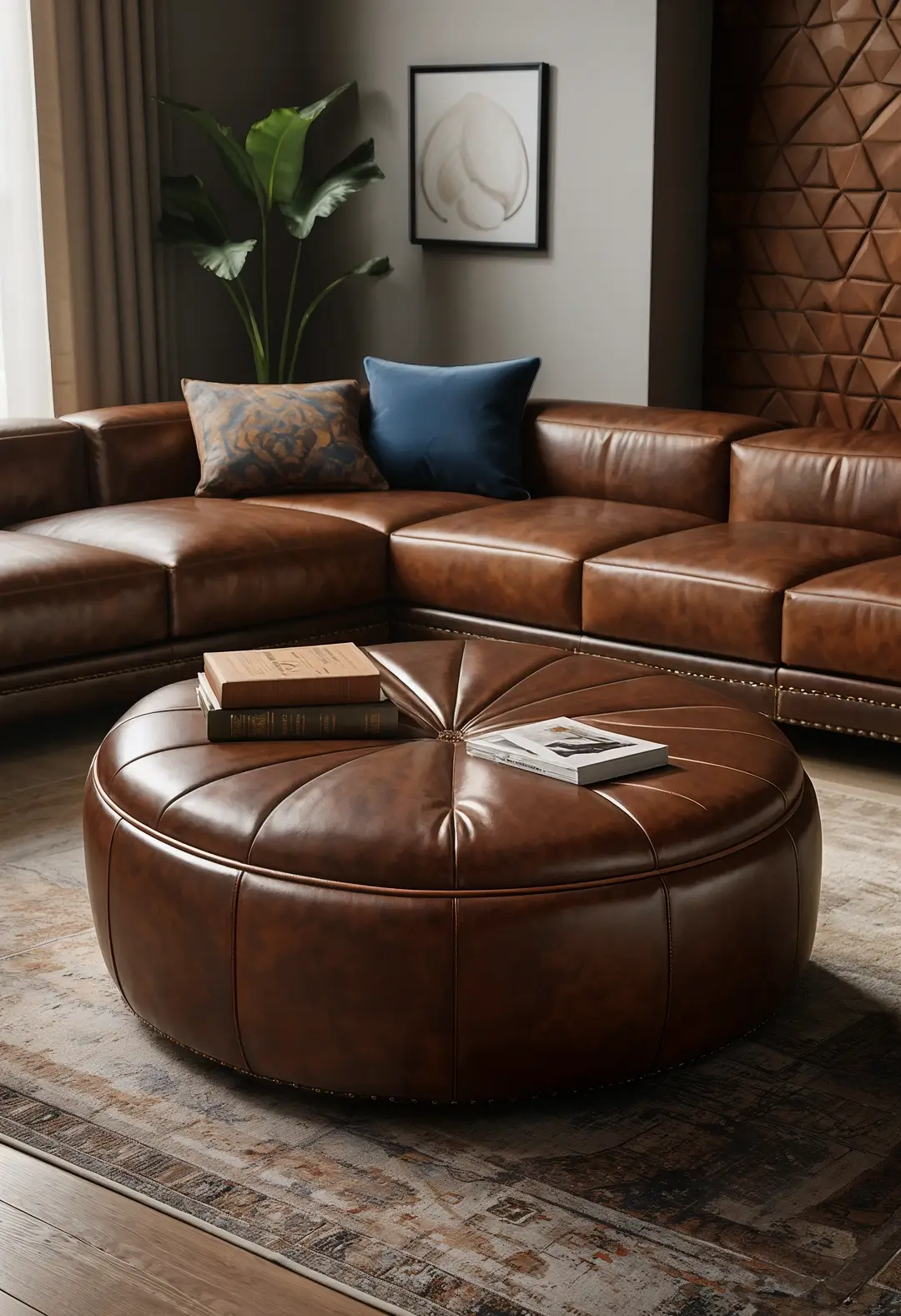
This coordinated approach often appeals to homeowners seeking polished, complete looks. Leather ottomans typically provide both functional and aesthetic benefits while maintaining material consistency.
Practical benefit: Ottomans often serve multiple purposes—footrests, storage, or additional seating as needed.
Design enhancement: Matching leather pieces often create sophisticated, intentionally curated environments.
Maximizing Your Brown Leather Couch
Through various projects, I’ve observed that successful brown leather couch styling often depends on understanding the piece’s dual nature as both a practical furniture choice and a sophisticated design element.
The key typically lies in choosing complementary elements that enhance leather’s natural qualities while reflecting your lifestyle needs.
This furniture choice works well because it often provides long-term value—both aesthetically and functionally—while supporting various decorating approaches.
Whether you prefer minimalist elegance or richly layered environments, brown leather couches often adapt to different visions while creating spaces that feel both welcoming and refined.
Remember: For any electrical work, structural changes, or built-in installations mentioned in these ideas, always consult with licensed professionals to ensure proper installation and code compliance.

